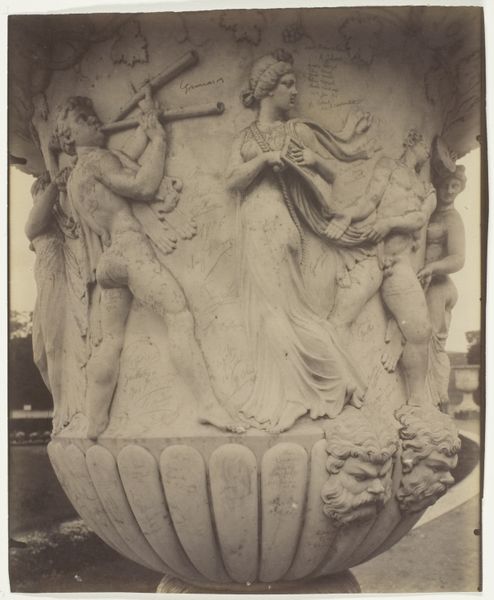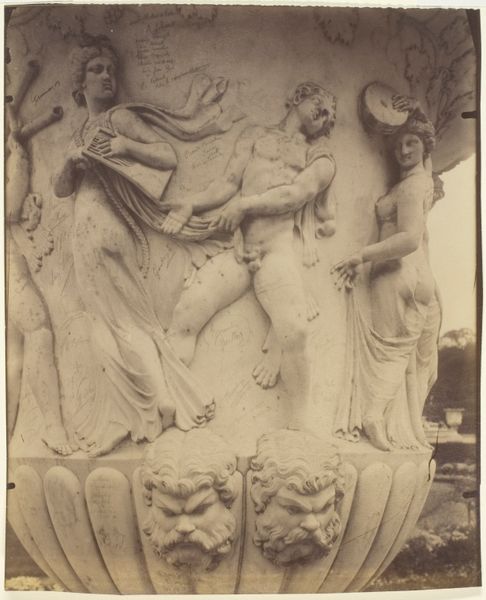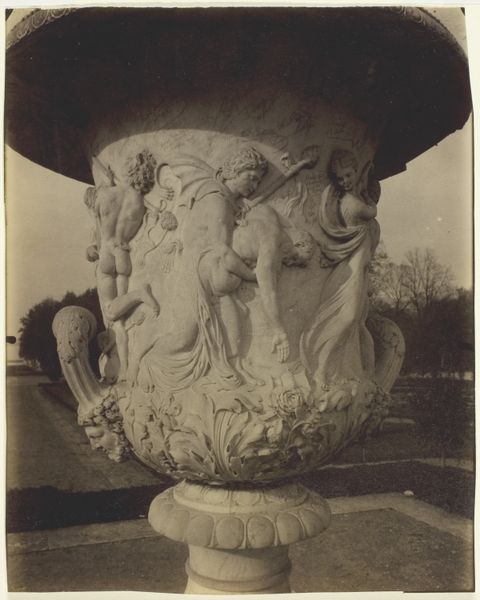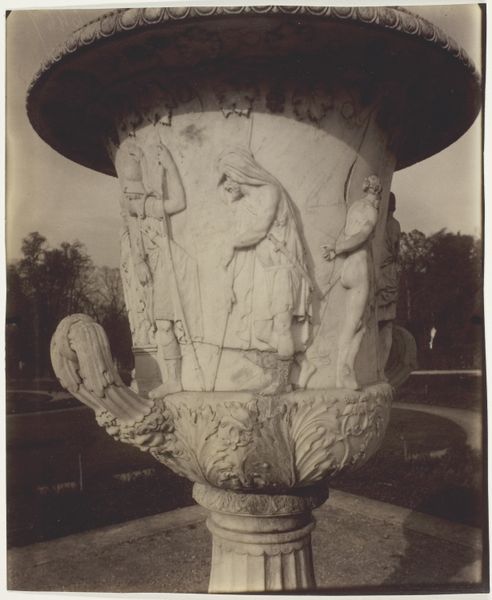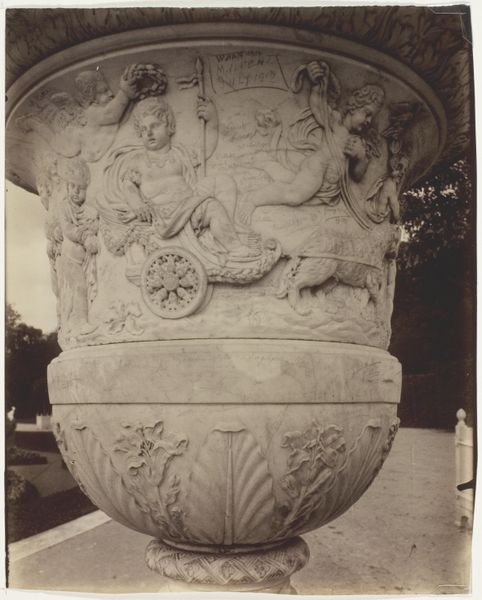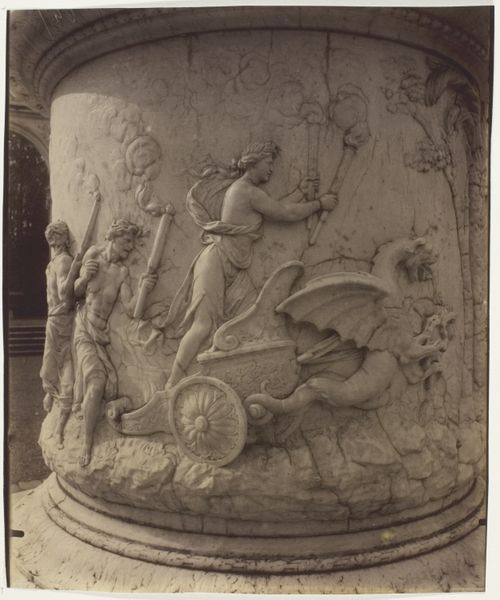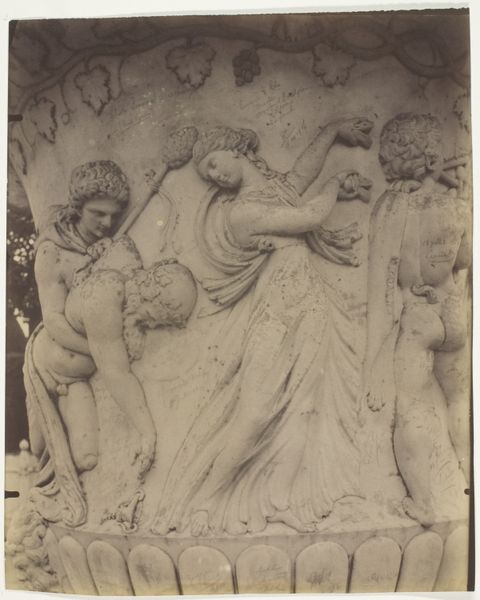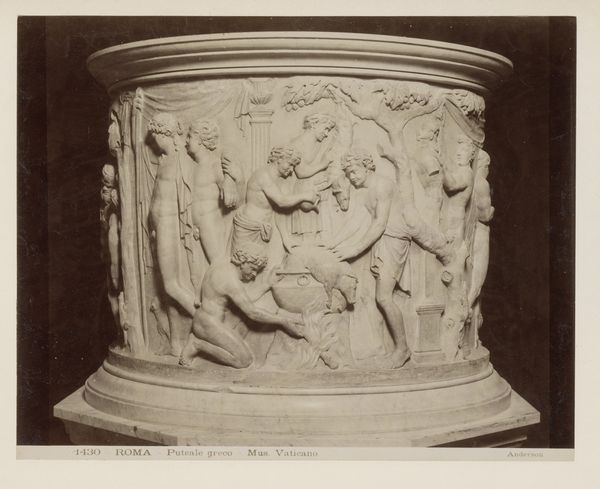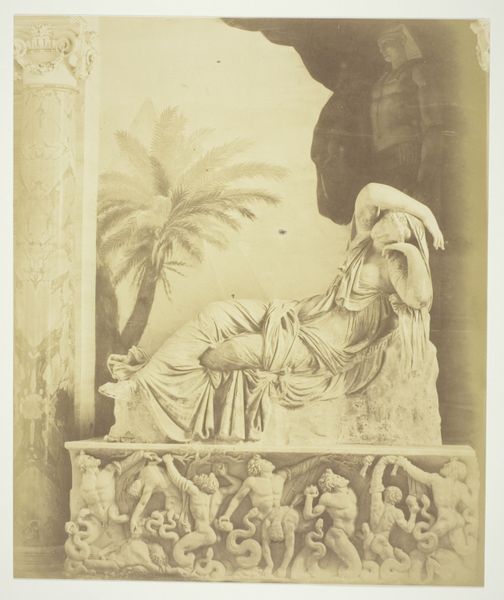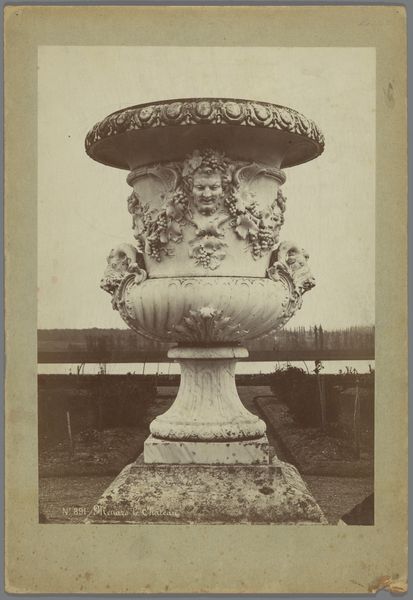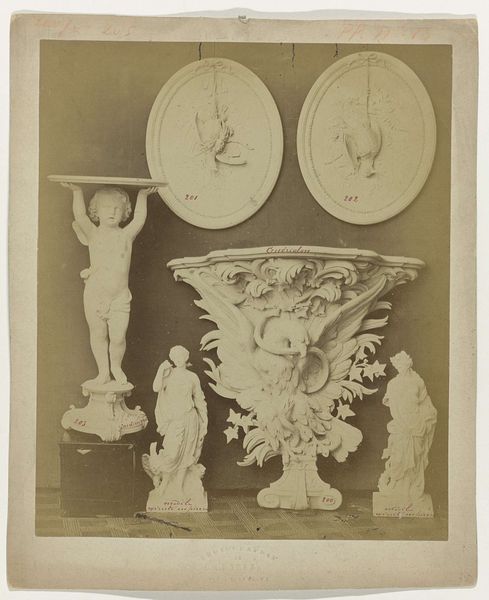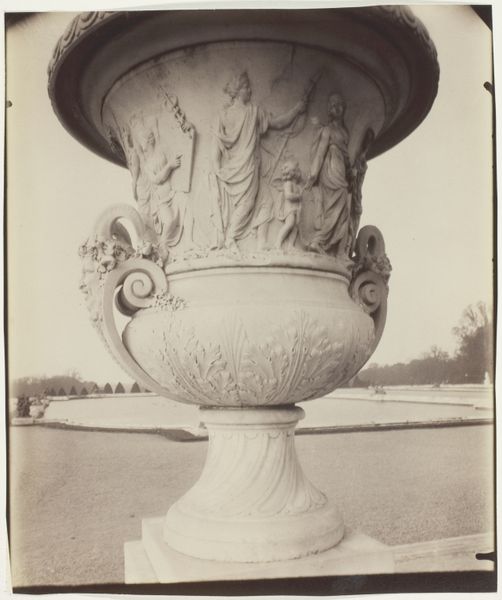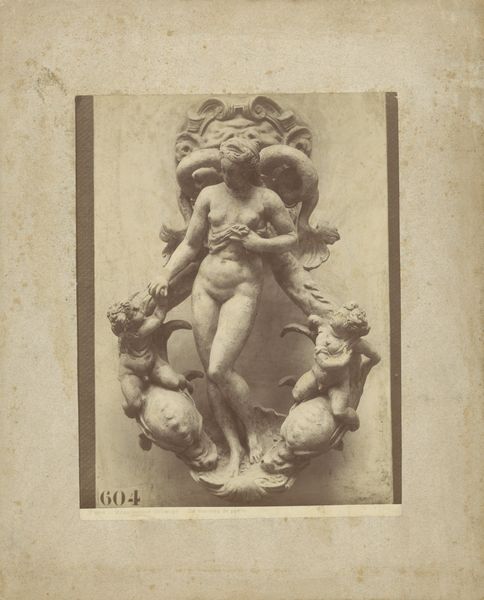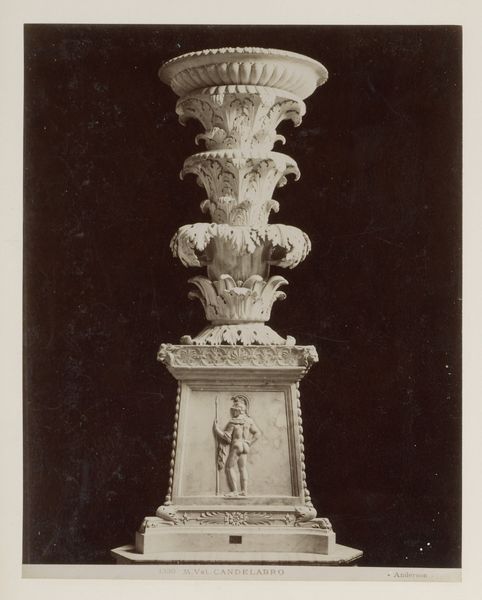
print, photography, sculpture
#
portrait
# print
#
sculpture
#
photography
#
ancient-mediterranean
#
sculpture
#
statue
Dimensions: 21.9 × 17.6 cm (image/paper)
Copyright: Public Domain
Curator: Eugène Atget’s photograph, taken in 1903, is titled "Versailles, Vase par Cornu". The artwork presents a monumental vase within the formal gardens of Versailles. The print captures not just the object but also a moment in the cultural landscape of early 20th-century France. Editor: It immediately strikes me as an artifact speaking of power and dominance, with these imposing sculpted figures practically leaping from the stone. It seems to blend classical ideals of beauty with something far more imposing and frankly, rather masculine. Curator: Indeed, Atget’s photographs often explore the relationships between public art and its viewers. This vase, undoubtedly commissioned for Versailles, reflects a specific ideology, linking the monarchy with classical antiquity and its associated power structures. How do we understand these overt displays of power in light of shifting social values? Editor: Exactly! We see these classical references constantly used to bolster legitimacy, constructing a continuous line of authority and superiority through the visual arts. The vase isn't just decorative; it actively communicates values of order, control, and ideal form-- values which conveniently buttress the ruling order. Considering this was taken just before seismic cultural shifts, the image reads as quite poignant, perhaps even unintentionally revealing those underlying tensions. Curator: Considering feminist theory, do the heroic masculine figures and the passively reclining female forms reinforce problematic gender dynamics? Can we read into the composition to discern power relations operating even outside explicit social structures? Editor: Absolutely, especially when analyzing representation. The male figure as an active, dominant force, alongside the passive female, really locks this artwork into a very specific power dynamic, especially given the time period in which this photograph was taken. Looking through a contemporary lens really sheds light on the narratives being told—and who is allowed to tell them. Curator: I find this image to be a testament to the complex web of societal norms perpetuated through art. Thank you for offering such astute observations. Editor: Likewise, thinking about how art influences societal structures makes viewing historical artworks continually rewarding.
Comments
No comments
Be the first to comment and join the conversation on the ultimate creative platform.
